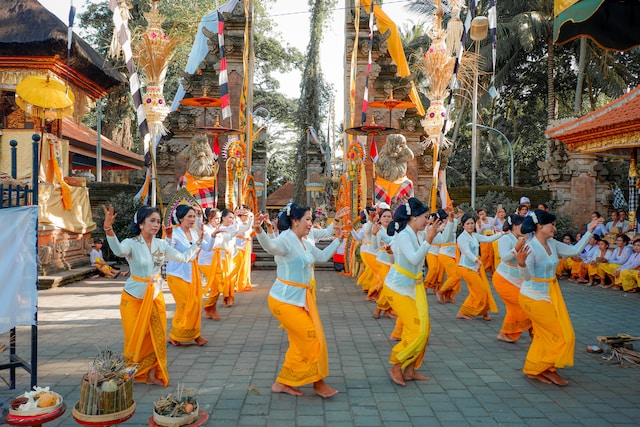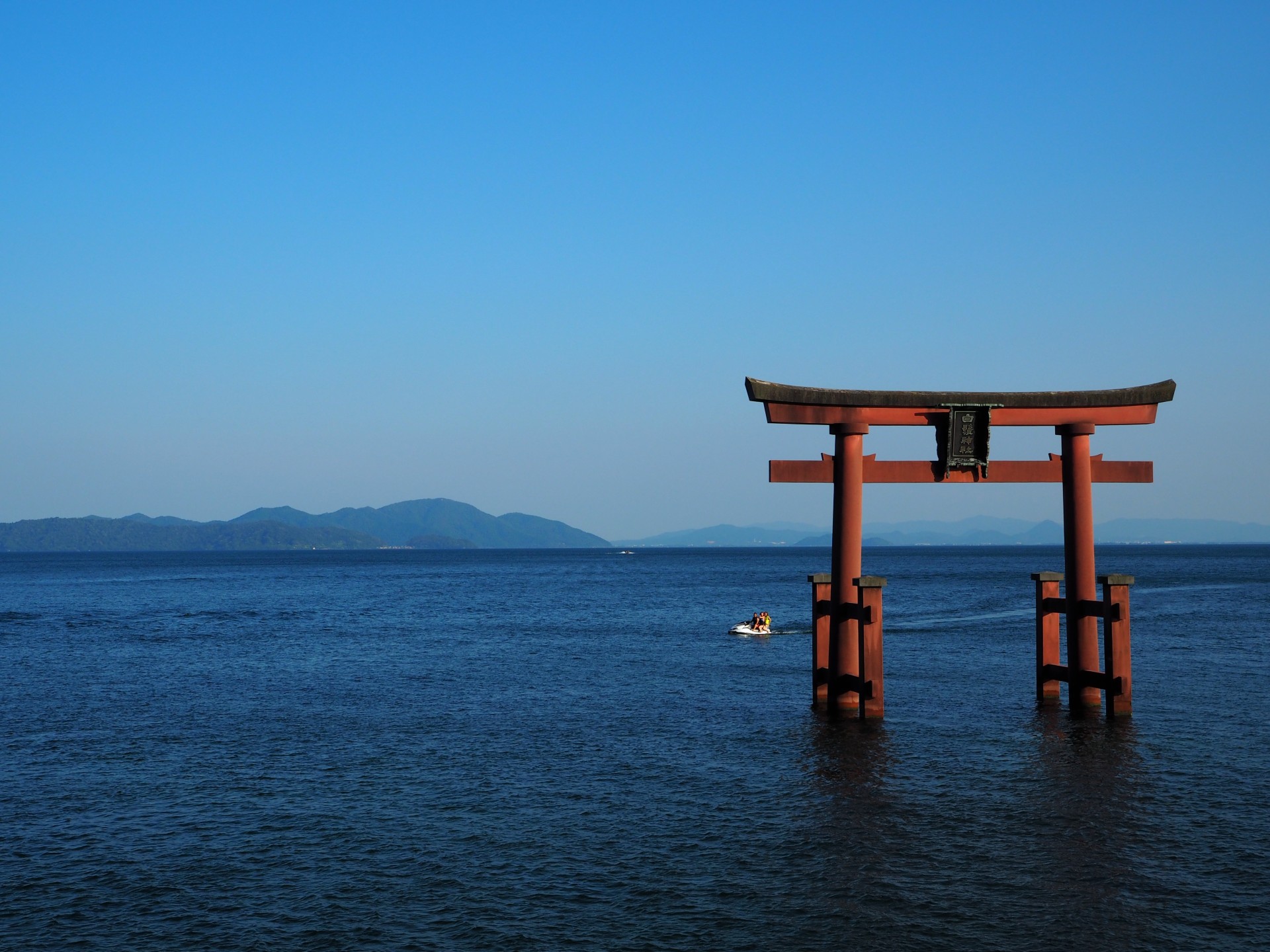Nestled amidst the turquoise waters of the Indian Ocean, Bali, the Island of the Gods, has long been a haven for those seeking solace and spiritual rejuvenation. With its lush landscapes, rich culture, and the warm hospitality of its people, this Indonesian paradise offers more than just picturesque sunsets and invigorating yoga sessions.
For those embarking on a wellness retreat to this tropical oasis, delving into the island’s cultural tapestry can add depth and meaning to the journey of self-discovery and well-being. This article is your guide to blending the pursuit of inner peace with the essence of Balinese culture. From temple visits to traditional cooking classes, this article will unveil the experiences that can enrich your soul and offer you a more profound connection to this magical island.
So, as you roll out your yoga mat, let’s also unfold the myriad of cultural treasures that await you in Bali. Let the harmonization of mind, body, and spirit with the enchanting culture of Bali, begin!
Melukat water purification ceremony
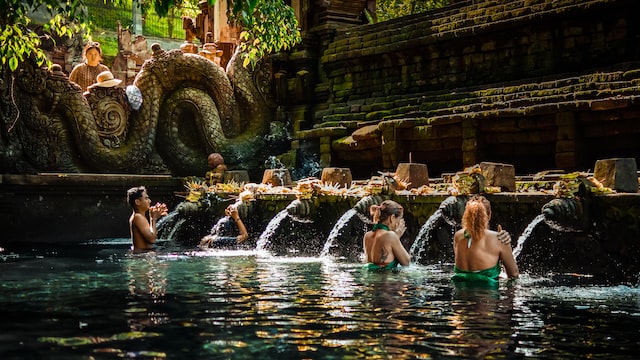
Water purification ceremonies, or ‘Melukat’ as they are locally known, are an integral part of Balinese Hindu culture. These rituals involve cleansing the body and spirit through immersing in sacred water sources, accompanied by prayers and offerings. The underlying belief is that water is a purifier, and its use in ritual baths cleanses the physical body and liberates the soul from impurities, negative energies, or bad karma.
The Melukat ceremony starts with prayers and offerings to the deities, seeking their blessings. Participants then proceed to take a bath in the holy water while praying and reflecting. Sometimes, a priest may also assist, chanting mantras and sprinkling holy water on the participants.
Water purification temples
There are several sacred places across Bali where you can partake in water purification ceremonies:
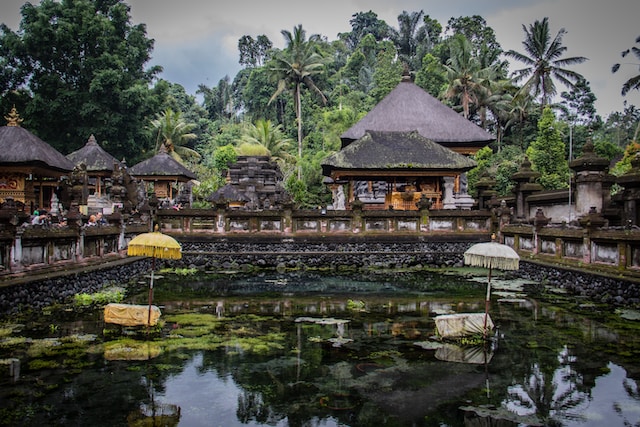
- Tirta Empul Temple (Pura Tirta Empul): Probably the most famous place for Melukat ceremonies, Tirta Empul, located in Tampaksiring, is believed to have been created by Lord Indra and possesses curative properties. It’s known for its large pool with 30 showers, which are said to have different healing powers.
- Sebatu Temple (Pura Gunung Kawi Sebatu): Located in Sebatu village, this temple is less crowded compared to Tirta Empul, making it ideal for those seeking a more peaceful experience. The temple boasts clear, cool water pooled from a holy spring.
- Mengening Temple (Pura Mengening): Also situated in Tampaksiring, Mengening is less known among tourists, making it another tranquil spot. The temple is set amidst rice paddies and has two pools with natural spring water for purification rituals.
- Taman Mumbul: Located in Sangeh, Taman Mumbul is one of the newer sites for Melukat ceremonies. It is a serene place surrounded by a lake and is characterized by its picturesque gazebos.
- Tirta Sudamala Temple: In the Bangli area, this sacred site is nestled in a lush landscape and has several springs where the Melukat ceremony can be performed.
This experience is perfect for any destination wellness retreat group. If you are planning to participate in a Melukat ceremony, it is essential to remember that this is a sacred ritual for the Balinese people. It’s important to show respect by dressing modestly, following the guidelines provided by the temple, and engaging in the process with reverence and sincerity. Many also opt to engage a local guide or priest who can explain the ceremony’s significance and ensure that it is performed correctly.
Uluwatu Kecak Fire Dance Show
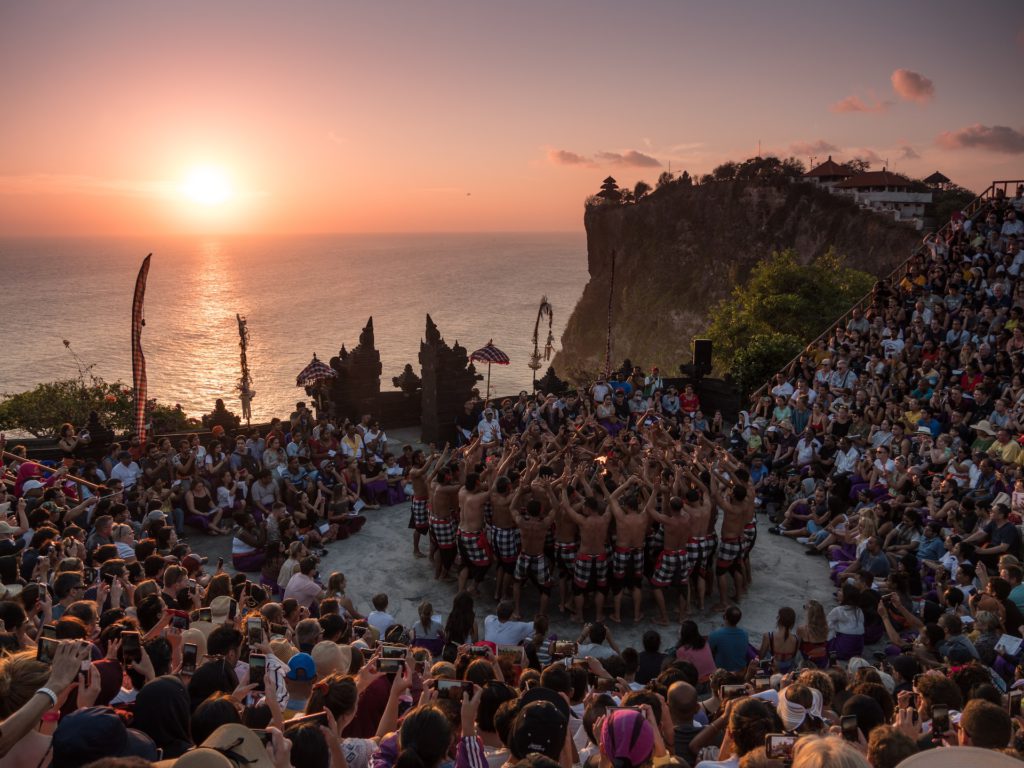
The Uluwatu Kecak Fire Dance Show is one of the most iconic and mesmerizing cultural performances you can witness in Bali. It is held at the Uluwatu Temple, which is perched on a cliff with a backdrop of the setting sun and the Indian Ocean, making it one of the most scenic locations on the island.
The Kecak Dance is unique because it doesn’t rely on musical instruments. Instead, the rhythm is provided by a chorus of men, sometimes up to a hundred or more, who chant “cak-cak-cak” while moving their hands and arms, simulating a battle from the ancient Hindu epic, the Ramayana. The word ‘Kecak’ is derived from the sound “cak” that the men chant rhythmically during the performance.
History and culture
The dance recounts the story of Prince Rama, his wife Sita, and his brother Laksamana, who are exiled in the forest. Sita’s beauty catches the eye of the evil King Rahwana, who kidnaps her. With the help of the monkey king Hanuman and his army, Rama wages war against Rahwana to rescue Sita.
Towards the end of the Kecak Dance, the performance takes a dramatic turn with the fire dance. This is when a character playing Hanuman, covered in white cloth, dances on charcoal and kicks the fire, displaying his bravery and strength. The fire symbolizes the purification of the human soul and the burning away of impurities.
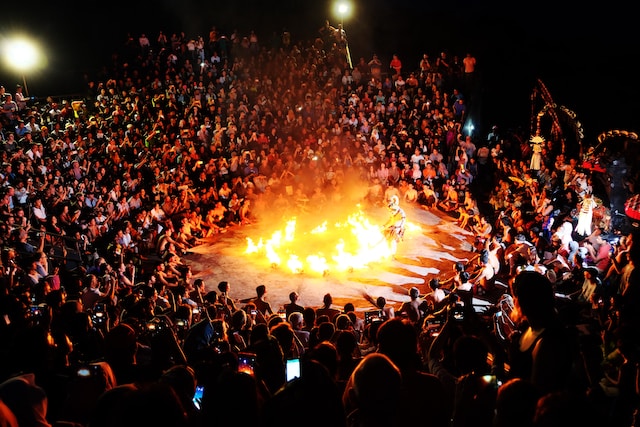
The significance of the Uluwatu Kecak Fire Dance Show is manifold. It serves as a medium through which the ancient epic, the Ramayana, is narrated and kept alive. Additionally, it showcases the rich cultural heritage and traditions of Bali. The dance itself, with its coordinated movements, chanting, and dramatic elements, requires a sense of unity and collaboration among performers, reflecting the strong communal bonds in Balinese culture.
For visitors, watching the Kecak Dance at Uluwatu Temple is an enchanting experience that combines cultural storytelling with breathtaking natural surroundings. The performance provides insight into Balinese Hindu mythology, traditional dance forms, and the importance of community. It is a highly recommended cultural experience for anyone visiting Bali.
Meeting with local priest/astrologer
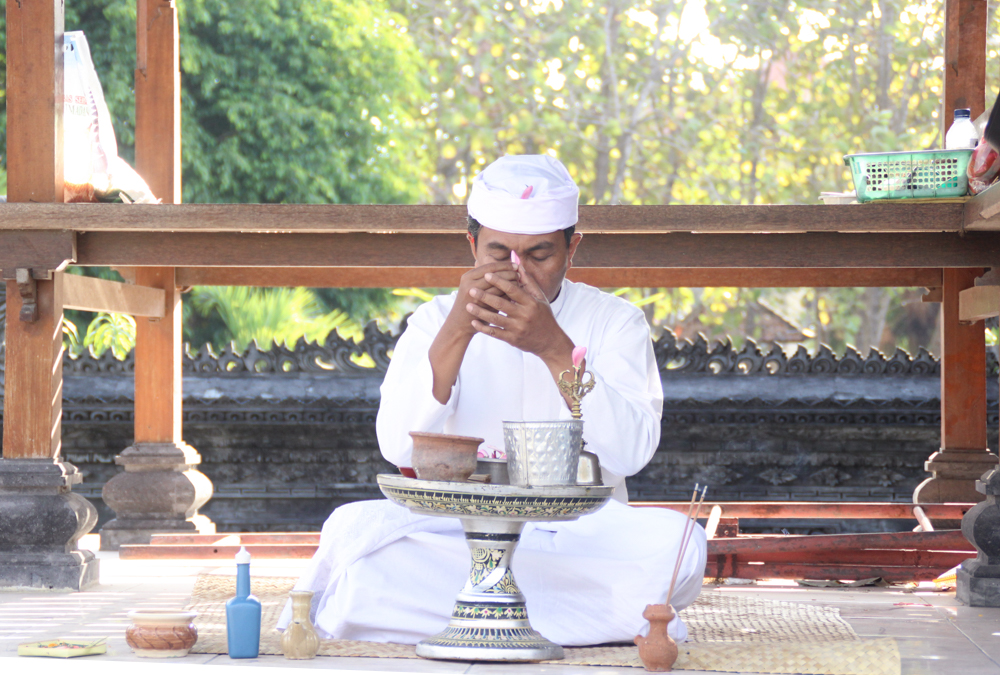
Meeting a local priest or astrologer during a trip to Bali can be a unique and enlightening cultural experience. The Balinese culture is deeply rooted in spirituality and the belief in the interconnectedness of the cosmos, nature, and human life. Balinese Hindu priests, known as ‘Pedanda’, and astrologers/healers, known as ‘Balian’, play a significant role in the daily lives of the locals.
Meeting with a Pedanda (Priest)
In Bali, Hindu priests are highly respected and sought after for various ceremonies, rituals, and spiritual advice. They often preside over temple ceremonies, blessings, and purification rituals. Meeting a Pedanda can offer insight into the Balinese Hinduism, its traditions, and rituals. You may also have an opportunity to witness or participate in a ceremony, where the priest may chant mantras, make offerings, and bless you with holy water. This can be an enlightening experience, especially if you are interested in spirituality and seeking to understand the deeper aspects of Balinese culture.
Meeting with a Balian (Astrologer/healer)
Balinese astrologers (or healers), often combine astrology, natural medicine, and spirituality in their practice. A visit to a Balian can involve an astrology reading where they might read your palm, use ancient lontar scripts, or employ other methods to give insights into your life. Some Balians specialize in physical healing using herbs and natural remedies, while others focus on spiritual healing and guidance.
When meeting a Balian, it is customary to bring a small offering, known as ‘Canang Sari’. This is a traditional offering made of palm leaves and can include flowers, snacks, and sometimes a small donation. It is a sign of respect and gratitude.
Places to meet a Priest or Astrologer
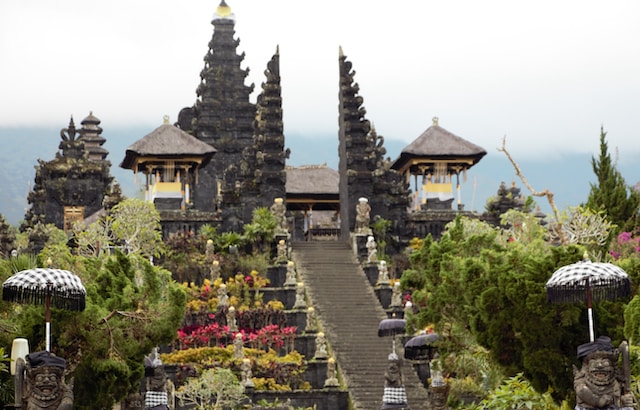
While you can arrange meetings with priests or astrologers through your hotel or local guides, it’s essential to approach the experience with respect and an open mind. Some renowned places where travelers can meet a Balian include Ubud, which is considered Bali’s spiritual heartland. There are also priests and astrologers in and around the temple areas such as Uluwatu, Besakih, and Tirta Empul.
Things to keep in mind
It’s important to remember that this experience is not just a tourist attraction but a glimpse into the sacred aspects of Balinese culture. Always approach with respect, wear appropriate attire (covering shoulders and legs), and listen attentively. If you have specific questions or seek guidance, it is best to communicate this humbly. Engage a translator if necessary, as many priests and astrologers may not speak English fluently.
Experiencing the spiritual aspects of Bali through meetings with local priests or astrologers can be deeply enriching, offering you perspectives that go beyond the usual tourist experiences.
Palm readings in Ubud
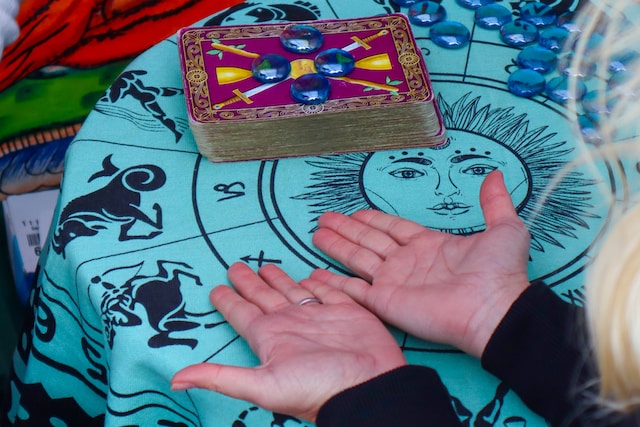
Ubud, located in the uplands of Bali, is often referred to as the cultural and spiritual heart of the island. Known for its lush rice paddies, ancient temples, and vibrant arts scene, Ubud is also a center for alternative therapies and spiritual practices, including palmistry or palm reading.
History and culture of palm reading in Ubud
Palm reading, also known as chiromancy, has been practiced in various cultures around the world for thousands of years. In Bali, palm reading is intertwined with Balinese Hinduism and is seen as a way to understand one’s destiny and spiritual path.
Balinese palmistry is influenced by ancient Indian practices, as Hinduism came to Bali through Indian traders and scholars around the 1st century AD. This tradition, which has been passed down through generations, is not just about foretelling the future but also understanding one’s karma and spiritual lessons.
For the Balinese, palm reading is often a spiritual practice. It is believed that the lines and shapes of the hands can reveal information about a person’s character, health, relationships, and even their past and future lives. Many locals consult palm readers for guidance in making important life decisions or to seek spiritual advice.
Locations to get your palm read in Ubud
Ubud is a hub for spiritual seekers and offers various places where you can get your palm read.
- Ketut Liyer’s House: One of the most famous palm readers in Ubud was Ketut Liyer, who was featured in Elizabeth Gilbert’s book “Eat, Pray, Love”. Though Ketut has passed away, his son continues the family tradition of palm reading at his house in Ubud.
- Local Balians or Healers: Ubud is home to numerous local healers who are skilled in palmistry. It is advisable to ask for recommendations from locals or at your accommodation, as they can often guide you to reputed practitioners.
- Yoga and Wellness Centers: Many yoga and wellness centers in Ubud, such as the Yoga Barn or Ubud Bodyworks Centre, often have resident or visiting palm readers and healers. You can check their schedules for consultations.
- Ubud Market: Sometimes, you can find palm readers set up near Ubud Market or along the streets. However, it is important to approach these with caution as not all of them are genuine practitioners.
When seeking a palm reading in Ubud, it is important to approach the experience with respect and an open mind. Additionally, it’s a good practice to give an offering or donation as a sign of gratitude for the service. Be aware that palm reading is a spiritual practice for many, and it’s essential to be respectful of the cultural beliefs and traditions associated with it.
Cooking classes with local chefs
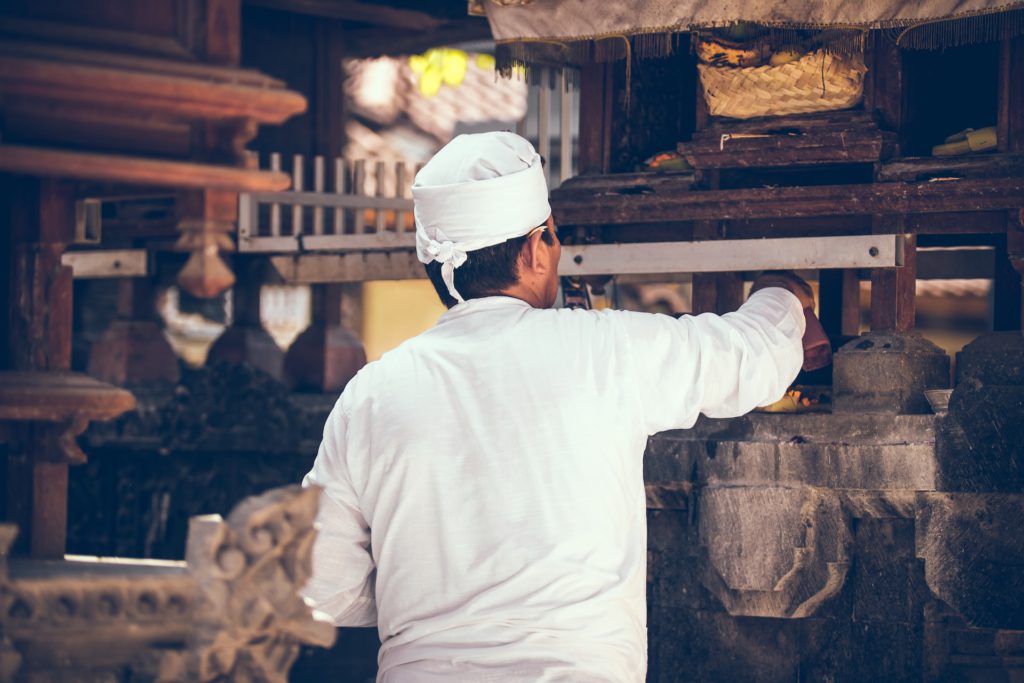
Taking part in a cooking class is an incredible way to immerse oneself in the rich and diverse culture of Bali. As the old adage goes, “the way to a nation’s heart is through its stomach,” and this rings especially true for Bali, where food holds a special place in daily life and traditions.
Understanding the ingredients and techniques
Balinese cuisine is characterized by an abundant use of spices, rice, and a wide array of fresh vegetables and meats. A cooking class often begins with a visit to a local market, where participants have the opportunity to experience the hustle and bustle of daily Balinese life. This is not only an eye-opening experience but also educative as you learn to identify various indigenous ingredients that are fundamental to Balinese cuisine.
History and culture
In a cooking class, you don’t just learn about ingredients and techniques, but also the cultural significance of various dishes. For example, you’ll learn about the importance of rice in Balinese culture and how it’s celebrated through various ceremonies and festivals. Many traditional dishes have ceremonial significance, and preparing them involves age-old rituals. By engaging in the preparation of these dishes, you are, in essence, participating in a cultural ritual.
Hands-on learning and building connections
The hands-on nature of cooking classes allows for a deep cultural immersion. As you learn to grind spices into a base paste known as ‘Bumbu’, or wrap meats in banana leaves for steaming, you are engaging in activities that have been part of Balinese culture for centuries.
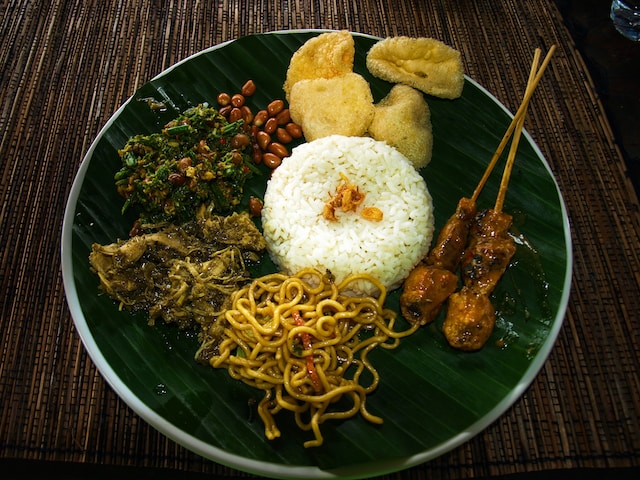
Cooking classes are often facilitated by local chefs or home cooks who are deeply rooted in Balinese culture. Through conversations and shared experiences, you can build connections with these locals. This interaction provides insights into Balinese daily life, beliefs, and values that are often tightly woven with their food.
Participating in a cooking class in Bali can be one of the most enriching and enjoyable ways to engage with the local culture. Through the preparation of traditional dishes, not only do you learn to appreciate the complexity and richness of Balinese cuisine, but you also gain a deeper understanding of the island’s heritage and way of life.
Tour a coffee plantation
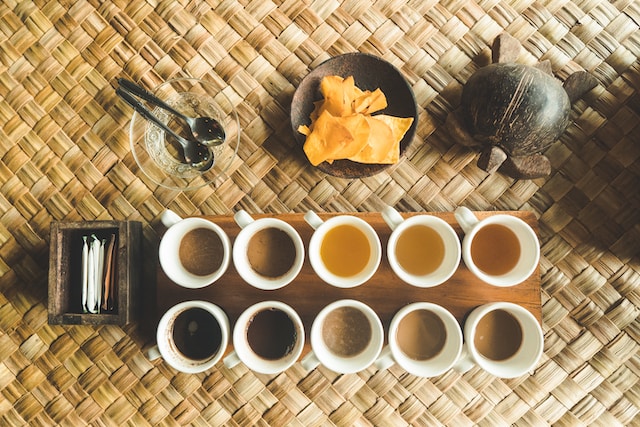
Coffee holds a special place in the cultural fabric of Bali. The island’s volcanic soil and tropical climate create an ideal environment for growing coffee, and the Balinese have been cultivating this aromatic bean for centuries. Embarking on a coffee tour and participating in tastings is not just about enjoying a delicious cup of java; it’s an opportunity to immerse yourself in the rich culture and history of Bali.
Understanding the process and connecting with the locals
Coffee tours usually begin with a walk through the coffee plantation. Here, you can observe the coffee plants, learn about the different varieties of beans, and understand how the coffee is grown and harvested. One of the unique methods you may learn about is the traditional “kopi luwak” or civet coffee process. This involves civets consuming the coffee cherries and later passing the beans, which are then cleaned, roasted, and ground into coffee. It’s a traditional method and the coffee produced is considered one of the most expensive and unique in the world.
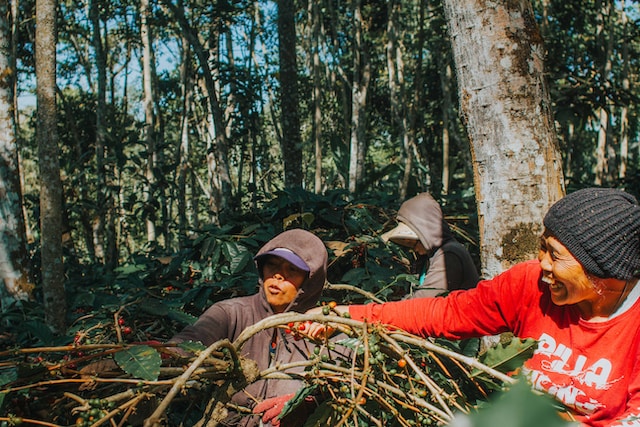
Coffee plantations in Bali are often family-owned, and many have been passed down through generations. Meeting with the farmers and families who manage these plantations is a cultural experience in itself. Through conversations with them, you can gain insights into their daily lives, the challenges and rewards of coffee farming, and the significance of coffee in Balinese culture.
Traditional roasting and grinding with tasting
Part of the tour often includes a demonstration of how the coffee is traditionally roasted and ground. This might be done over an open fire, using simple tools. This process has been a part of Balinese culture for centuries and observing it allows you to connect with the island’s history and traditions.
The highlight of any coffee tour is the tasting. In Bali, you will often have the opportunity to sample a variety of coffees, including single-origin beans, kopi luwak, and coffees that are blended with local spices and herbs. Through tasting, you learn to appreciate the complex flavors and aromas that are unique to Balinese coffee.
Embarking on a coffee tour and tasting in Bali offers a holistic cultural experience that combines education, interaction, and sensory indulgence. It’s a journey through the history, tradition, and flavor of an island that takes pride in its coffee heritage.
Explore the Tegalalang rice terraces
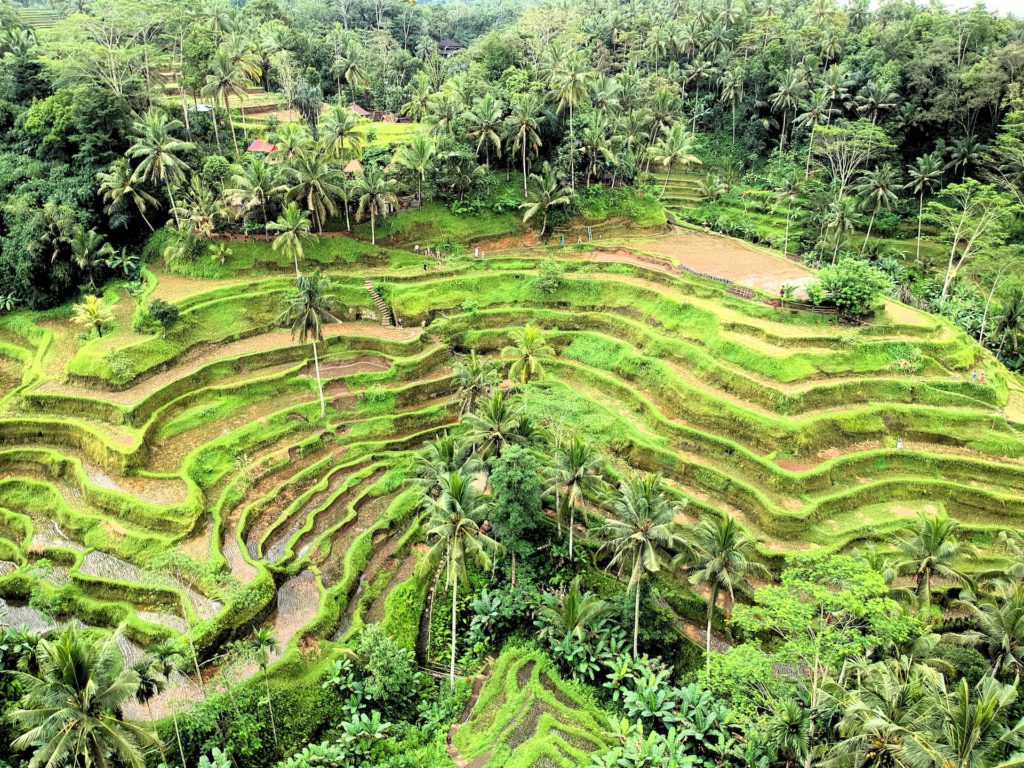
The Tegalalang Rice Terraces, located near Ubud in the heart of Bali, are an iconic symbol of the island’s rich cultural heritage and agricultural traditions. These stunning terraces, with their meticulously manicured landscapes, are not only a visual feast but also an example of the traditional Balinese cooperative irrigation system called ‘Subak’. Visiting and touring the Tegalalang Rice Terraces is an excellent way for travelers to immerse themselves in Balinese culture and learn about the island’s ancient agricultural practices.
Rice is a staple food in Bali and holds immense cultural significance. It is not just seen as sustenance but is also a gift from the gods. The Tegalalang Rice Terraces reflect the importance of rice cultivation in Balinese society. The terracing and irrigation methods have been developed over centuries and are a testament to the Balinese farmers’ ingenuity and deep connection with the land.
Understanding Subak system
The Subak system is an ancient irrigation system that has been in use in Bali for over a thousand years. It is a community-managed system which ensures that water from the rivers is distributed evenly among the rice paddies. At Tegalalang, you can see the Subak system in action and learn how it plays a role in fostering a sense of community and cooperation among the farmers.
One of the best ways to experience the Tegalalang Rice Terraces is by taking a walk through them. As you navigate the narrow paths, you’ll be surrounded by lush green paddies, and you can observe the farmers at work – planting, harvesting, or tending to the rice. This is a unique opportunity to witness first-hand the labor and dedication that goes into rice cultivation.
Interacting with local farmers and participating in planting or harvesting
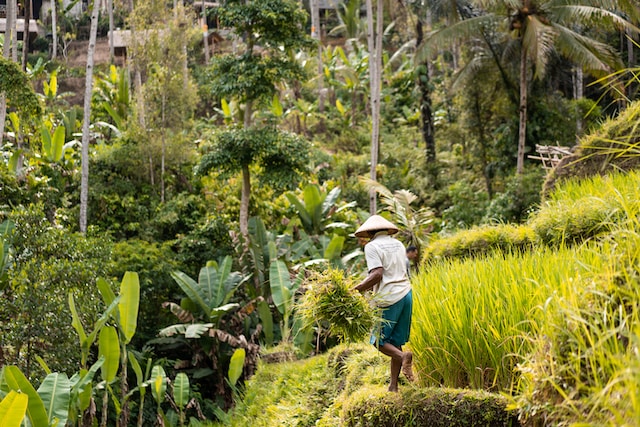
During your walk through the terraces, you might have the chance to interact with local farmers. This interaction can provide insights into the daily lives of those who work the land, their traditions, and their beliefs. It’s also a way to understand the challenges and rewards of their livelihood.
Some tours may offer you the opportunity to participate in planting or harvesting rice. This hands-on experience can be both educational and humbling, as you gain a deeper appreciation for the hard work that goes into producing a staple that feeds millions.
Rice cultivation in Bali is often accompanied by various ceremonies and offerings to the gods for a bountiful harvest. If you are fortunate, you may witness one of these ceremonies during your visit.
Touring the area
Beyond the cultural immersion, the Tegalalang Rice Terraces are simply beautiful to behold. The lush green or golden yellow terraces (depending on the season) against the backdrop of palm trees and blue skies are a photographer’s dream.
When visiting Tegalalang Rice Terraces, it’s important to be respectful of the land and the local farmers. It’s their place of work, and it’s vital to appreciate that this stunning landscape is a result of their tireless efforts. If a local guide offers to show you around, it’s customary to tip them for their time and knowledge.
Prepare traditional Balinese offerings
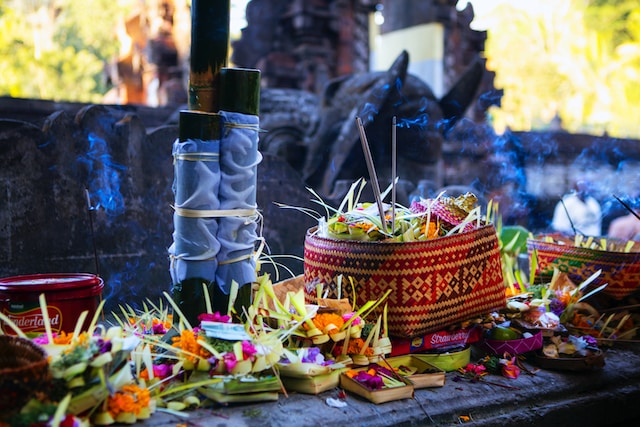
Preparing traditional Balinese offerings, known as “Canang Sari,” is an essential aspect of the cultural and spiritual life in Bali. As a traveler looking for a culturally immersive experience, participating in the creation of these offerings can give you a deeper understanding and appreciation of Balinese culture and Hinduism.
What is Canang Sari?
Canang Sari is a traditional Balinese offering made from palm leaves, flowers, and sometimes food items or coins. These offerings are created as a form of thanksgiving to the Hindu deities for the peace and prosperity bestowed upon the world. Canang Sari is made daily and can be seen in temples, shrines, houses, and even at shops and street corners throughout Bali.
Each element of Canang Sari holds specific significance. The palm leaf basket symbolizes the body; the flowers represent the soul, and the arrangement usually includes different colors of flowers each symbolizing a different Hindu god. Food items and coins represent the essentials of daily life. Together, the Canang Sari embodies the philosophy of harmonizing the body, soul, and nature and giving back in gratitude.
Participating in preparing Canang Sari
Engaging in the creation of Canang Sari can be a deeply spiritual and meditative experience. Here are steps on how you might participate:
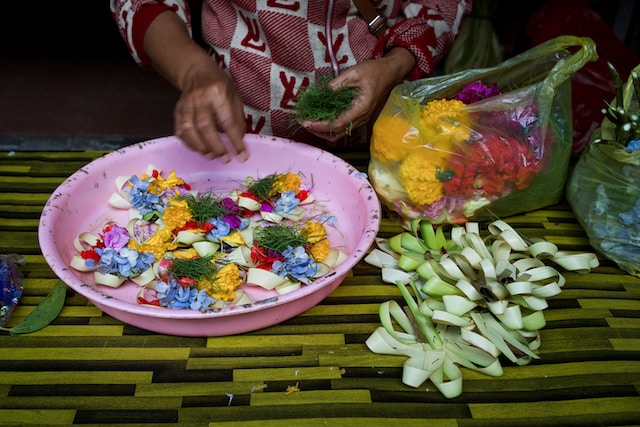
- Learning from locals: Often, Balinese women are the ones who prepare Canang Sari. Approach your participation with humility and respect. You can ask the staff at your accommodation if they can arrange for you to learn from someone experienced in making these offerings.
- Gathering materials: Collecting the materials is an integral part of the process. This usually involves palm leaves, flowers, and sometimes food or incense. Some materials can be purchased at local markets.
- Making the offering: Under the guidance of a local, you’ll learn how to create the palm leaf basket, arrange the flowers, and assemble the Canang Sari. This requires patience and precision.
- Placing the offering: Once the Canang Sari is prepared, you may have the opportunity to place it at a shrine or temple. This is done with a sense of reverence. Sometimes incense is lit as a part of the offering.
- Offering prayers: You may be guided on how to offer a simple prayer of gratitude. This typically involves a gesture called “anjali mudra” – pressing your palms together at the heart and bowing your head.
Things to keep in mind
- Always approach this activity with respect and openness. Remember that it’s a sacred practice for the locals.
- Dress modestly during the activity, especially if you are visiting a temple.
- It’s appropriate to give a small donation or gift to the person who teaches you, as a sign of appreciation.
Participating in preparing traditional Balinese offerings can be a profoundly enriching experience, connecting you to the spiritual and cultural essence of Bali. It is not just a craft but a form of devotion and an expression of balance and harmony in life.
Legong Dance and Ramayana performance
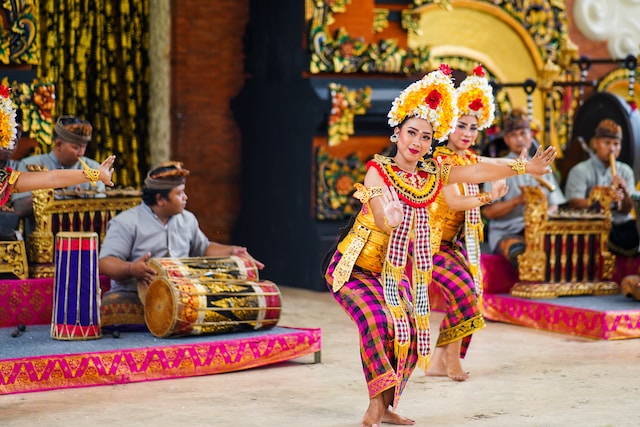
The Legong Dance and the Ramayana performances are two distinct traditional Balinese dances that play a significant role in the island’s cultural and religious life. Both are vibrant expressions of Balinese heritage, characterized by elaborate costumes, intricate movements, and captivating music.
Legong Dance
- Overview: Legong is one of Bali’s most revered and intricate traditional dances. It usually involves young female dancers, often girls who have not yet reached puberty. The word Legong is believed to be derived from the Balinese word ‘leg’ meaning elastic or flexible, and ‘gong’ which refers to the gamelan, a traditional Indonesian musical ensemble.
- Costumes and makeup: Dancers wear brightly colored costumes with intricate gold detailing, and their makeup is equally elaborate, including headdresses made from gold leaf and flowers. The costumes are not only visually striking but also add to the narrative of the dance.
- Movements and expression: The movements in Legong are highly stylized and intricate, characterized by complex footwork, expressive gestures, and dramatic facial expressions. The eyes play an essential role in Legong, with rapid movements that coincide with different elements of the story being told.
- Significance: The Legong dance usually tells stories from ancient Javanese and Balinese folklore. The stories are often morality tales or love stories. Legong is not just a form of entertainment but is considered a sacred art form and is often performed at temples during religious ceremonies.
Ramayana performance
- Overview: Ramayana is an ancient Indian epic that narrates the life of Prince Rama, his wife Sita, and his brother Lakshmana. The Balinese Ramayana Ballet is a dance-drama that depicts the stories of the Ramayana through a series of graceful and dramatic dances.
- Costumes and characters: The dancers in a Ramayana performance wear elaborate and symbolic costumes. The main characters, like Rama, Sita, and the demon king Ravana, are easily distinguishable by their attire. Masks are also often used, particularly for characters like Hanuman, the monkey god.
- Movements and expression: Like the Legong, the Ramayana performance involves highly stylized movements, but it also places a heavy emphasis on dramatic expressions to convey the emotions of the characters. The performance is accompanied by a gamelan orchestra, and sometimes choral singing which narrates the story.
- Significance: The Ramayana ballet is not just a performance but is deeply rooted in Balinese Hindu beliefs. The tale symbolizes the victory of good over evil and the importance of dharma (moral duty). It is often performed during religious festivals and ceremonies to impart these values to the community.
Both the Legong Dance and Ramayana performances in Bali are captivating cultural expressions that provide insight into the island’s rich history, spirituality, and artistic traditions. Whether experienced in a temple during a festival or as a scheduled performance for visitors, these dances are a testament to the enduring strength of Balinese culture.
Village immersions with local families and artisans
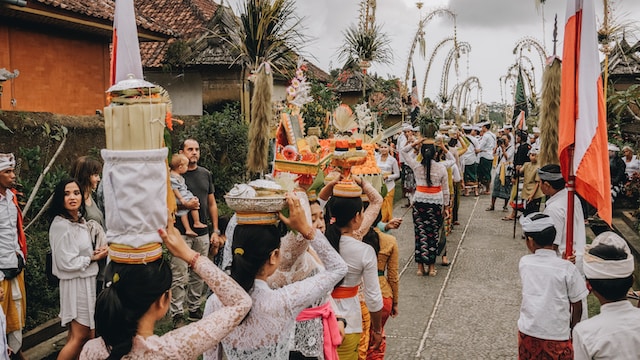
Village immersions with local families and artisans in Bali offer an authentic and enriching way for tourists to experience the island’s culture firsthand. Unlike traditional sightseeing, village immersions allow visitors to actively engage with the community, participate in daily activities, and gain insights into the Balinese way of life. This kind of experience is ideal for travelers seeking a deeper connection and understanding of the culture they are visiting. Here are some of the possible village immersions you can explore:
- Homestays with local families: Staying with a local family in a traditional Balinese home is one of the most immersive experiences you can have. During a homestay, you’ll participate in the daily routines of the family, which might include cooking, farming, and attending local ceremonies. Through these interactions, you’ll learn about family traditions, values, and the Balinese concept of community.
- Artisan workshops: Bali is known for its rich tradition of arts and crafts. Engaging with local artisans can be an enlightening experience. You can visit traditional workshops where skills like woodcarving, silver-smithing, and textile weaving are practiced. Some artisans offer workshops where you can try your hand at creating your own piece of art.
- Agricultural activities: Engaging in agricultural activities such as rice planting or harvesting is common in village immersions. This hands-on experience helps you understand the hard work that goes into agriculture and the importance of rice in Balinese culture.
- Traditional dance and music lessons: In some villages, you can take lessons in traditional Balinese dance or learn to play instruments used in a gamelan orchestra. These classes are often taught by skilled local performers and provide insights into the importance of dance and music in Balinese culture.
- Community projects: Some village immersions focus on community involvement and sustainable tourism. Tourists can take part in community development projects like teaching English, participating in environmental conservation efforts, or contributing to local infrastructure improvements.
Remember, while engaging in village immersions, it’s important to approach the experience with respect and sensitivity towards the local customs and traditions. This is not just a learning opportunity for you, but also a chance to foster cross-cultural understanding and contribute positively to the community you are visiting.
Interested in becoming a retreat host and getting paid to do what you love? Start planning here!
About TourHero
TourHero is a social travel platform that enables you to travel with like-minded people and fall in love with the journey. We work closely with handpicked local operators to ensure every experience curated is unique and exclusive to your travel group. Come with us on epic adventures and create memories that last a lifetime. Get started here!
